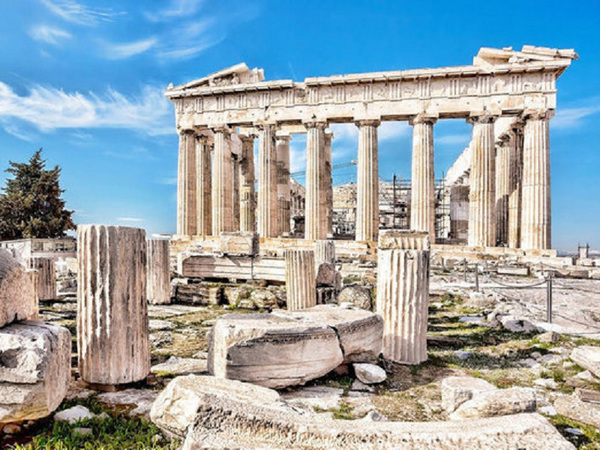Apart from the Parthenon, which made Athens famous all over the world, the city boasts other buildings just as important, historical sites that marked each in its own way the historical development of Attica.

Step back in time and immerse yourself in the cradle of democracy at the Ancient Agora. Here, where the Athenian spirit flourished, you'll discover a treasure trove of significant monuments. Among them, the reconstructed Stoa of Attalus, a majestic colonnaded hall, now houses the Agora Museum, brimming with artifacts unearthed from the area. Crowning the Agoraios Kolonos hilltop, the Theseum, a marvel of Doric architecture, stands as one of the best-preserved ancient temples.
The Theseum, also known as the Temple of Hephaestus, shares a similar design with the Parthenon, the peripteral structure. Built during the reign of Pericles from Pentelic marble, this versatile monument has served various purposes throughout history.
East of the Ancient Agora lies the Roman Agora, a testament to the city's Roman influence, constructed in the 1st century BC. Enclosed by walls, it's accessible from Aiolou Street. Explore prominent structures like the Agoranomion, a central marketplace, and the Propylon, the grand gateway dedicated to Athena Archegetis, protector of the city.

In the Roman Agora precinct, uncover the fascinating Tower of the Winds, a testament to Athenian ingenuity. This octagonal marvel, also known as the Horologion of Andronicus Cyrrhestes or Temple of Aeolus, was built by the astronomer Andronicus of Cyrrhus.
The tower, crafted from marble and capped with a pyramidal roof, served as a multi-functional marvel. Imagine a sundial, weathervane, and even a water clock housed within its structure! The frieze depicting the wind deities and the iron time markings on the tower speak volumes about the intellectual curiosity of this era. It's a reminder of human progress, pushing boundaries without modern technology, paving the way for scientific advancements we enjoy today.
Another gem in this area is the Hadrian's Library, described as an "immense square" with towering walls, that once served as a center for learning and cultural exchange. Southwest of ancient Athens, nature takes center stage. Ascend the celebrated Hill of the Nymphs, reaching a height of 147 meters. The name hints at its past, possibly a sanctuary dedicated to the nymphs. Atop this verdant hill stands the National Observatory, a testament to Greece's scientific pursuits since 1842.

Venture northwest of the Acropolis to discover the Areopagus, a historical landmark steeped in legal significance. This rocky outcrop served as the meeting place for the Council of the Areopagus, the oldest governing body in Athens.
Opposite the Acropolis, encounter the verdant Hill of Philopappus. Its name stems from the magnificent funeral monument erected in 119 AD, honoring Philopappus, a Syrian prince who rose to the prestigious position of a Roman consul and earned Athenian citizenship.
Also known as the Mouseion (Museum Hill), this area might have been an ancient sanctuary dedicated to the Muses, the goddesses of inspiration. Ascend the hill and be rewarded with breathtaking panoramic views of the Acropolis and the Saronic Gulf, a perfect ending to your historical exploration.












